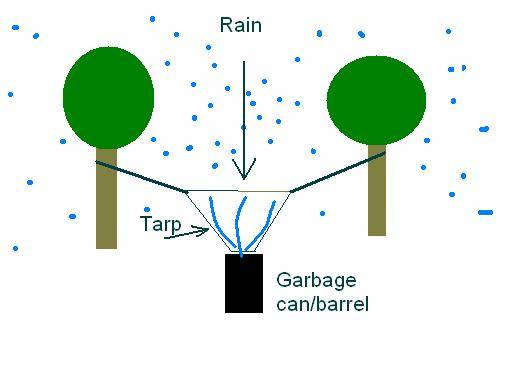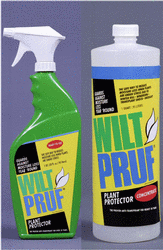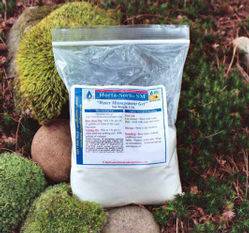I live in a climate that turns into a psudo-drought during summer(July-Sept), after July 4th there is little to no rain until mid September, during that time highs are usually in the 90s if not over 100F.
If my plants are not provided with water artificially(by hand or machine), or if it is not provided naturally(from a natural wet spot in the ground), chances are I will harvest little(if the plant survives at all).
So basicly I have 2 choices as a wildland guerilla grower, I can either find the natural wetspots(which can be rare here, epecially with sufficent sunlight), or I can provide it myself. Several summers I hauled water to the plants, which can be done with low numbers in the rough, but with larger numbers it gets kinda crazy. This prompted me to find a mechanical way.
Hence my notorious "Auto-irrigation system", which itself was inspired by the "Guerilla Irrigation" thread on OG. Basiclly water is stored on the site in makeshift resivours, and doled out through a basic "drip" system(I still hope to get a couple of these working next summer). Water can be piped from a source above the grow, or pumped from a site below, or it can be collected from rain water using a tarp.
For those that don't want to get involved in building a irrigation system, water could still be stored onsite(or nearby), so that you can trully get a distance into the wilderness, and not have to rely on planting near a attention catching stream, or hauling it on your back. In the past I have collected more than 150 gallons in several garbage cans using a simple 4'x8'black plastic tarp(in about 2 months time).

Basicly by planning ahead, you could plant virtually anywhere, you are not limited by anything except how far you are willing to walk for watering. The trick to collecting rainwater is to start months ahead of the end of your rainy season(s). If there is a sunny, deserted spot you have always wanted to grow in, but its isolated location has made the idea of getting water to the location a difficult prospect, this is your answer. Collect the free stuff falling from the sky and save your back!
I like to use heavy ammounts of "water crystals", as well as adding moisture retaining organic materials to the soil (Peat, Coco coir, very mild composted manure, etc). I also like to mulch the ground ontop of the plots, to help keep the soil cool while the sun beats on it, slowing evaporation.
Anyways, I just wanted to give a condensed version of my experience growing in a dry summer climate, what I am more interested in is the experiences of growers in similar climates out there. How do you cope? How do you prepare your plots? How much water do you provide, and how often? How do the various methods you use affect you yields?
Basicly, if you grow in a dry(hot?) summer climate(in a Guerilla style), please post and share your knowlege with us, lets start a discussion

If my plants are not provided with water artificially(by hand or machine), or if it is not provided naturally(from a natural wet spot in the ground), chances are I will harvest little(if the plant survives at all).
So basicly I have 2 choices as a wildland guerilla grower, I can either find the natural wetspots(which can be rare here, epecially with sufficent sunlight), or I can provide it myself. Several summers I hauled water to the plants, which can be done with low numbers in the rough, but with larger numbers it gets kinda crazy. This prompted me to find a mechanical way.
Hence my notorious "Auto-irrigation system", which itself was inspired by the "Guerilla Irrigation" thread on OG. Basiclly water is stored on the site in makeshift resivours, and doled out through a basic "drip" system(I still hope to get a couple of these working next summer). Water can be piped from a source above the grow, or pumped from a site below, or it can be collected from rain water using a tarp.
For those that don't want to get involved in building a irrigation system, water could still be stored onsite(or nearby), so that you can trully get a distance into the wilderness, and not have to rely on planting near a attention catching stream, or hauling it on your back. In the past I have collected more than 150 gallons in several garbage cans using a simple 4'x8'black plastic tarp(in about 2 months time).
Basicly by planning ahead, you could plant virtually anywhere, you are not limited by anything except how far you are willing to walk for watering. The trick to collecting rainwater is to start months ahead of the end of your rainy season(s). If there is a sunny, deserted spot you have always wanted to grow in, but its isolated location has made the idea of getting water to the location a difficult prospect, this is your answer. Collect the free stuff falling from the sky and save your back!
I like to use heavy ammounts of "water crystals", as well as adding moisture retaining organic materials to the soil (Peat, Coco coir, very mild composted manure, etc). I also like to mulch the ground ontop of the plots, to help keep the soil cool while the sun beats on it, slowing evaporation.
Anyways, I just wanted to give a condensed version of my experience growing in a dry summer climate, what I am more interested in is the experiences of growers in similar climates out there. How do you cope? How do you prepare your plots? How much water do you provide, and how often? How do the various methods you use affect you yields?
Basicly, if you grow in a dry(hot?) summer climate(in a Guerilla style), please post and share your knowlege with us, lets start a discussion


Last edited:



 The wilt pruf company sent me a sample so I sprayed it. I don't know how well it works. Use low rates. They may send you a sample if you tell them you want to try it out before buying a 55 gallon drum. That should get their attention. That's what I did. Send them a email.
The wilt pruf company sent me a sample so I sprayed it. I don't know how well it works. Use low rates. They may send you a sample if you tell them you want to try it out before buying a 55 gallon drum. That should get their attention. That's what I did. Send them a email.  That summer we bought firehoses and hooked up to water from the firehydrants.
That summer we bought firehoses and hooked up to water from the firehydrants.





